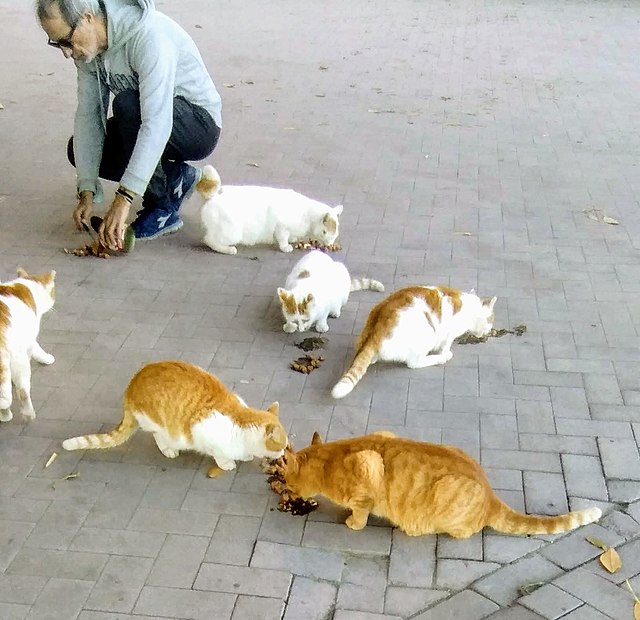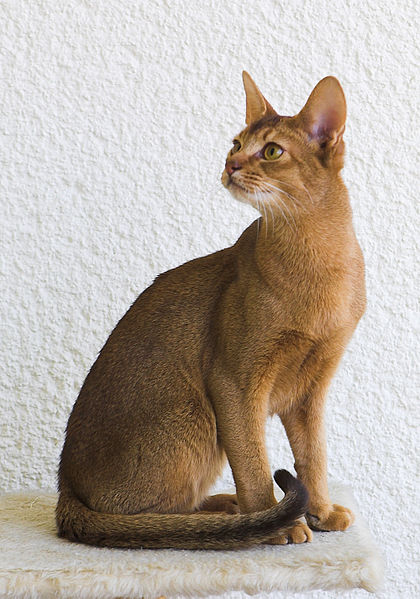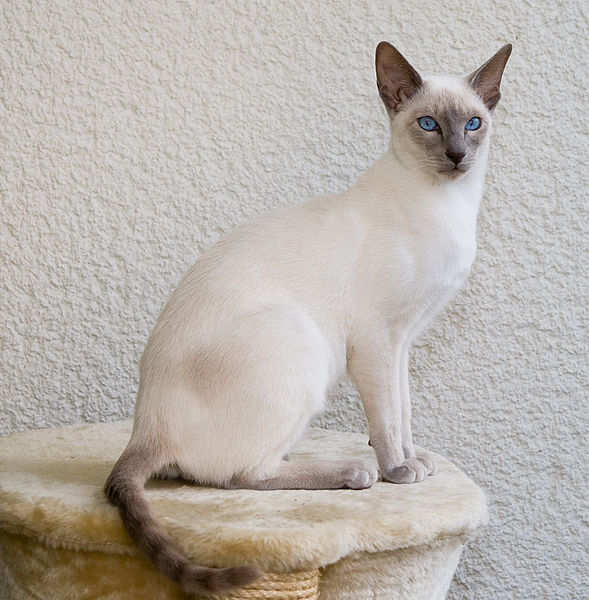A feral cat or a stray cat is an unowned domestic cat that lives outdoors and avoids human contact; it does not allow itself to be handled or touched, and usually remains hidden from humans. Feral cats may breed over dozens of generations and become an aggressive local apex predator in urban, savannah and bushland environments. Some feral cats may become more comfortable with people who regularly feed them, but even with long-term attempts at socialization, they usually remain aloof and are most active after dusk. Of the 700 million cats in the world, an estimated 480 million are feral.
A feral cat with a tipped ear, indicating it was neutered in a trap-neuter-return program
Feral cats in Largo di Torre Argentina, Rome. Photo by Paolo Monti, 1969.
Colony of semi-feral cats in Messina harbour. They are regularly fed by the local fishermen.
A farm cat
The cat, commonly referred to as the domestic cat or house cat, is a small domesticated carnivorous mammal. It is the only domesticated species of the family Felidae. Recent advances in archaeology and genetics have shown that the domestication of the cat occurred in the Near East around 7500 BC. It is commonly kept as a house pet and farm cat, but also ranges freely as a feral cat avoiding human contact. It is valued by humans for companionship and its ability to kill vermin. Its retractable claws are adapted to killing small prey like mice and rats. It has a strong, flexible body, quick reflexes, sharp teeth, and its night vision and sense of smell are well developed. It is a social species, but a solitary hunter and a crepuscular predator. Cat communication includes vocalizations like meowing, purring, trilling, hissing, growling, and grunting as well as cat body language. It can hear sounds too faint or too high in frequency for human ears, such as those made by small mammals. It also secretes and perceives pheromones.

Image: Cat August 2010 4
Image: Gustav chocolate
Image: Orange tabby cat sitting on fallen leaves Hisashi 01A
Image: Siam lilacpoint








